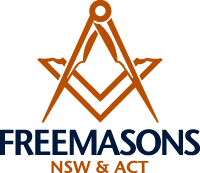
From the graveyard to the Grand Installation

The Sydney Town Hall has a long and rich history with many tales to tell!
Built on the site of an old cemetery from local Sydney sandstone in the grand Victorian Second Empire style,
it has been described as having ‘lavishly ornamented composition with focal tower and fanciful roofs.’ It remains the only non-religious city building to retain its original function and interior for over 140 years. And it was, of course, the venue for many Grand Installations.
Located on the original site of the town hall, the Old Sydney Burial Ground was in use between 1792 and 1820. By the 1840s it was considered an eyesore and a community health hazard. Almost 50 years later, on 4 April 1868 Sydney’s first royal visitor, HRH Prince Alfred, Duke of Edinburgh, laid the foundation stone of the Sydney Town Hall. But it wasn’t until 1884, 16 years later, that the first stage of construction was completed.
The history of the construction and design of this iconic building is very complex. According to the Sydney Town Hall website it was ‘interspersed with scandal, subterfuge, suicide and lengthy delays, and a roll call of architects, designers, engineers and builders whose associations with the project and with council were not always amicable or professional.’
The clock tower was part of the first building stage and was completed in 1873 although the first stage lasted from 1868 until 1884. The second stage took another five years to complete and included the grand hall we know today. This second stage was designed by the City Architect, Bro Thomas Sapsford and his assistant Bro John Hennessey. The Sydney Town Hall was officially opened exactly 125 ago by the Mayor, Bro John Harris on 29 November 1889 in the presence of the Grand Master MW Bro Lord Carrington.
Projected to be a ‘Temple of Democracy’ where the people of Sydney could congregate and participate in a social and political life through a myriad of events, the Centennial Hall was the largest municipal hall in the world in 1889. The city was so proud of its successful completion, that a public holiday was declared to celebrate its opening.
During the construction, legend has it that the foreman of the works used one arm and one eye to calculate distances between points. He also used this system during the construction of the stone lions which surround the Town Hall. On the side of the Town Hall facing St Andrew’s Cathedral, if you look closely you can see the tribute to the foreman by the workmen who completed one of the lions with one eye closed – better known as the ‘Blinking Lion.’
Soon after its inauguration it also became the preferred venue for Masonic Grand Installations when a new Grand Master is invested. This tradition continued for more than 100 years until 2005 when MW Bro Raymond Brooke was the last Grand Master installed in the ‘Temple of Democracy’.
The building houses the Sydney City Council Chamber, reception rooms, the Centennial Hall and offices for the Lord Mayor and elected councillors. The Centennial Hall (main hall) contains the Sydney Town Hall Grand Organ, the world’s largest pipe organ which was installed in 1890 by the English firm of William Hill & Son. Before the opening of the Sydney Opera House and its Concert Hall, the Town Hall was Sydney’s premier concert hall and staged many notable performances.
Renovations were undertaken in 2008/9 primarily to upgrade the mechanical, hydraulic, electrical and communication services within the building. The renovations, completed by Sydney builder Kell & Rigby, included removing 6,000 cubic metres of sandstone from underneath the building. The Town Hall is listed on the Register of the National Estate and is part of the important Town Hall group of heritage- listed buildings, which also includes the Queen Victoria Building, St Andrew’s Cathedral, the Gresham Hotel and the former Bank of New South Wales.
Article extracted from Freemason magazine, December 2014, pages 22 and 23.


